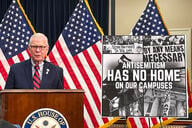You have /5 articles left.
Sign up for a free account or log in.
In the past few weeks, a black student at Yale University had the police called on her for napping in a common room, and two Native American teenagers, prospective students at Colorado State University, were stopped on a campus tour after another parent was reportedly nervous, calling them “creepy” in a 911 call.
While generally much of the criticism of these incidents has been levied toward the people making the phone calls to law enforcement, some have also criticized the police for not outright dismissing those making racist complaints on law-abiding nonwhite individuals.
Though police will always be called to deal with the bias of others, experts say, how officers handle the situation when they arrive on scene, and their training in this area, can influence the outcome and how these marginalized students feel.
In the case of Yale, a black graduate student was napping in a common room, her books and laptop spread around her, when another student, a white woman, found her there, interrogated her and called the police.
Most of the encounter was documented and posted to Facebook by the student who was napping. Police arrived and requested that Lolade Siyonbola, the graduate student who was “napping while black,” as some online have said, provide her identification. She did so, reluctantly, but only after telling the officers that she had every right to be there.
The institution apparently agrees -- according to news reports, police admonished the graduate student who made the call, and the university has said it needs to re-evaluate how to handle these incidents.
Police stopped two young men on a campus tour in the case of Colorado State, and they were made to provide a confirmation email that they were supposed to be on the grounds that day. They were asked to empty their pockets. Their mother, in an emotional Facebook post, said her sons were the victims of racism -- they had scraped together the money to visit the campus. It was a longtime dream of one of the boys to enroll there, and simply because they were shy and quiet, they were made out to be suspicious, their mother wrote online.
In both these episodes, critics say that the police officers never made wholehearted attempts to hear out the students or apologize deeply afterward.
“That’s what gives these incidents such painful resonance for students of color,” said Jennifer Eberhardt, the Morris M. Doyle Centennial Professor of Public Policy at Stanford University. “Not only is it hurtful that they are viewed as ‘suspect’ by those around them, the actions and attitude of the police can validate the idea that they’re not trusted, that they don’t belong.”
Many policing experts said that the reality is that officers regularly respond to calls about behavior that may not be illegal. It's not always clear to those being sent to check out a call that the person who complained may have acted based on their own prejudices.
Ideally, when police arrive after this type of phone call, they would “as expeditiously as possible” ask for identification and wrap up a misunderstanding, said Sue Riseling, executive director of the International Association of Campus Law Enforcement Administrators (IACLEA). The first layer of scrutiny can start with the dispatcher on the other end, asking detailed questions about what the issue is beyond merely a person’s presence, Riseling said.
What police can’t do is not ask for identification, which is the protocol, she said. Law enforcement has had a complex and strained relationship with some minority groups, but sometimes just this reputation can exacerbate a tense situation, Riseling said.
She recalled a call she received when she worked at University of Wisconsin at Madison, where a black man and a white man were fighting in the street, and a group of white people called the police.
Riseling said she openly acknowledged immediately that this was a racially tinged situation to the black man. She asked him to take a breath while she went over and talked to the group of white people -- and she ended up figuring out that the white man had started the fight.
“He was having a hard time believing I was being right up front with him,” Riseling said.
Police need to be sensitive to the experiences of marginalized men and women, she said. When people of color have police called on them, it’s an attack on who they are at their core -- their race.
“The other person has so much more at stake emotionally at that point,” she said.
But law enforcement agencies need to go beyond simply understanding these people -- training is necessary for officers, said Jody David Armour, the Roy P. Crocker Professor of Law at the University of Southern Carolina. Armour specializes in racial injustice and profiling.
Officers need to start recognizing their inherent biases, Armour said. When they encounter someone they view as suspicious, they should take a moment to reflect why that’s the case -- he suggested engaging in some racial “role reversal.” If the person was white, would there still be a problem?
“It’s important to still do your job,” Armour said. “You still have to investigate, you still have to do your job, but we would hope that it would be informed by your recognition there may be frustration on the part of the person you are investigating.”
With the rise of movements such as Black Lives Matter, recognition of these issues on college campuses has improved, he said. Armour said that when police talk to students who may have biases, they can be the ones to talk with them about these issues.
“In the spirit of we’re all in this together, we can treat these biases as more of a public health problem than bad actors with bad intentions,” Armour said.




